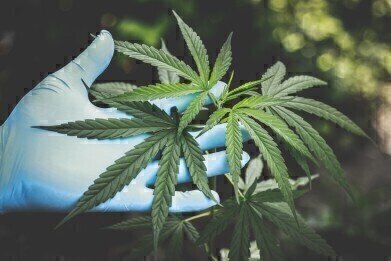GC, MDGC
Tracking the progression of Legal Cannabis Production with Chromatography
May 18 2015
Almost 50% of adults in England take prescription medicines on a regular basis according to the NHS Choices website. We expect that the pill that we take contains exactly what the doctor ordered — too little or too much can have a potentially fatal consequence. Strict quality control procedures during the manufacturing process help us to stay safe whilst taking our medicine.
In the United States it is now legal in some states to take marijuana for medicinal use; other states have decriminalised marijuana’s recreational use. Do the same controls apply? Can you be sure that what you’re taking is what you think it is? Let’s see how chromatography is helping to bring some control to a new situation.
THC — A Legal High
One of the main ingredients in cannabis — whether you take it recreationally or medicinally — is a component called tetrahydrocannabinol or THC. THC is one of the cannabinoid compounds that are found in the resin of the cannabis plant — a flowering herb believed to be native to the Himalayan region. There are three varieties of cannabis but only two, Cannabis indica and C. sativa, produce THC in sufficient quantities to be grown for the psychoactive component.
THC works by interacting with the natural cannabinoid receptors found in our brains. These receptors are associated with pain, nausea and pleasure — which is why cannabis can be used as a medicine to treat pain and is taken for a high. How high you get — or how effective the cannabis is as a pain reliever — depends on its potency.
Potency — Power to Affect
Potency is defined as the power of a drug to affect the body or mind, and cannabis potency is linked to the THC content — the more THC the greater the cannabis’ potency. The decriminalization of cannabis in many US states and its increasing medicinal use has pushed the issue of cannabis potency into the spotlight. Like a conventional medicine — how do we know what we are taking?
Chromatography Measures the High
With the changes to the law, the supply of cannabis in some states has changed. Customers have stricter requirements than when the supply was underground and illegal. Consequently, new laboratories and tests are required to meet the new demand.
Liquid and gas chromatography are used to test the THC content of cannabis leaves and edible cannabis snacks. Edibles are a concern because it is harder to make sure a correct dose is taken and the potency of THC is higher when cannabis is eaten than when it is inhaled. Further links between chromatography and drug testing are discussed the post: Chromatography is a Breath of Fresh Air for Drug Testing.
A recent report has suggested that the ‘new’ cannabis has a higher THC content than ‘old’ (pre-legalisation) cannabis, with a THC content of 18% versus 10% in the ‘old’ cannabis.
With more growers and an increasing consumption — more testing would seem to be the sensible option to prevent unnecessary overdoses.
Digital Edition
Chromatography Today - Buyers' Guide 2022
October 2023
In This Edition Modern & Practical Applications - Accelerating ADC Development with Mass Spectrometry - Implementing High-Resolution Ion Mobility into Peptide Mapping Workflows Chromatogr...
View all digital editions
Events
Apr 28 2024 Montreal, Quebec, Canada
May 05 2024 Seville, Spain
May 15 2024 Birmingham, UK
May 19 2024 Brno, Czech Republic
May 21 2024 Lagos, Nigeria














